World 🢖 North America 🢖 Mexico 🢖 Tamaulipas
Sinkholes 🢔 Caves 🢔 Geological wonders 🢔 Categories of wonders
Wonder
El Zacaton sinkhole
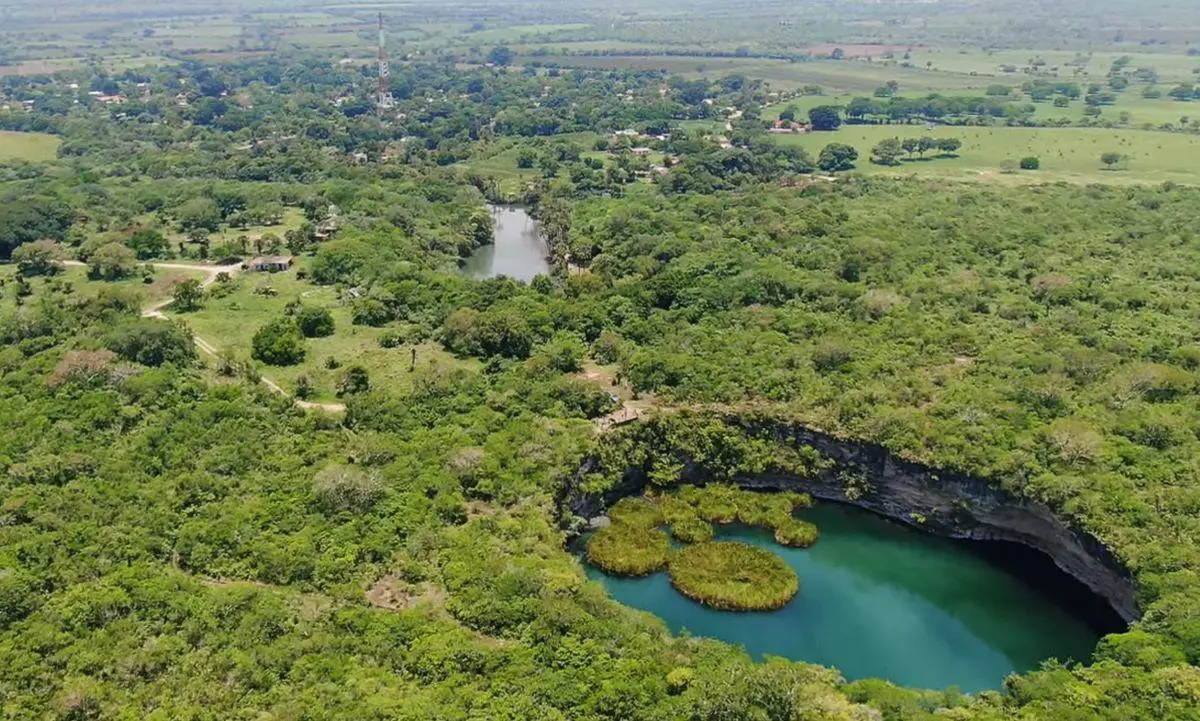
 In short
In short
One of the most impressive natural landmarks in Mexico is El Zacaton sinkhole. It is the deepest known water filled sinkhole in the world. Besides this the sinkhole contains endemic classes of microorganisms and unusual floating islands.
 54.5%
54.5%
GPS coordinates
Location, address
Alternate names
Depth
Map of the site
If you see this after your page is loaded completely, leafletJS files are missing.
 In detail
In detail
Sistema Zacatón
El Zacaton sinkhole belongs to unique karst field – Sistema Zacatón. These karst features have incredible characteristics without parallels elsewhere in the world. In total, this area contains some 20 unusual features – sinkholes, caves, springs created by deep groundwater heated by volcanic processes. Karstification processes here continue today as well – acidic groundwater continues to strip away the limestone and deposits it in unusual travertine formations.
El Zacatón sinkhole is the most prominent and the best-known feature in this karst field. It is the deepest sinkhole in a group of five unusual sinkholes which are located close together but are not directly connected.
Dramatic exploration
Often people think that Zacatón was discovered only a few decades ago but this is not true.
We can be sure that indigenous people in this area knew about the sinkhole. Félix María Calleja, viceroy of New Spain, in 1795 wrote: "There is a large cave lit by natural skylight (most likely Las Quarteles) and 200 varas (some 170 m) from this cave there is a deep cavity that has a lake with an island.". We can be sure that he meant exactly El Zacatón.
Deep diving in El Zacaton
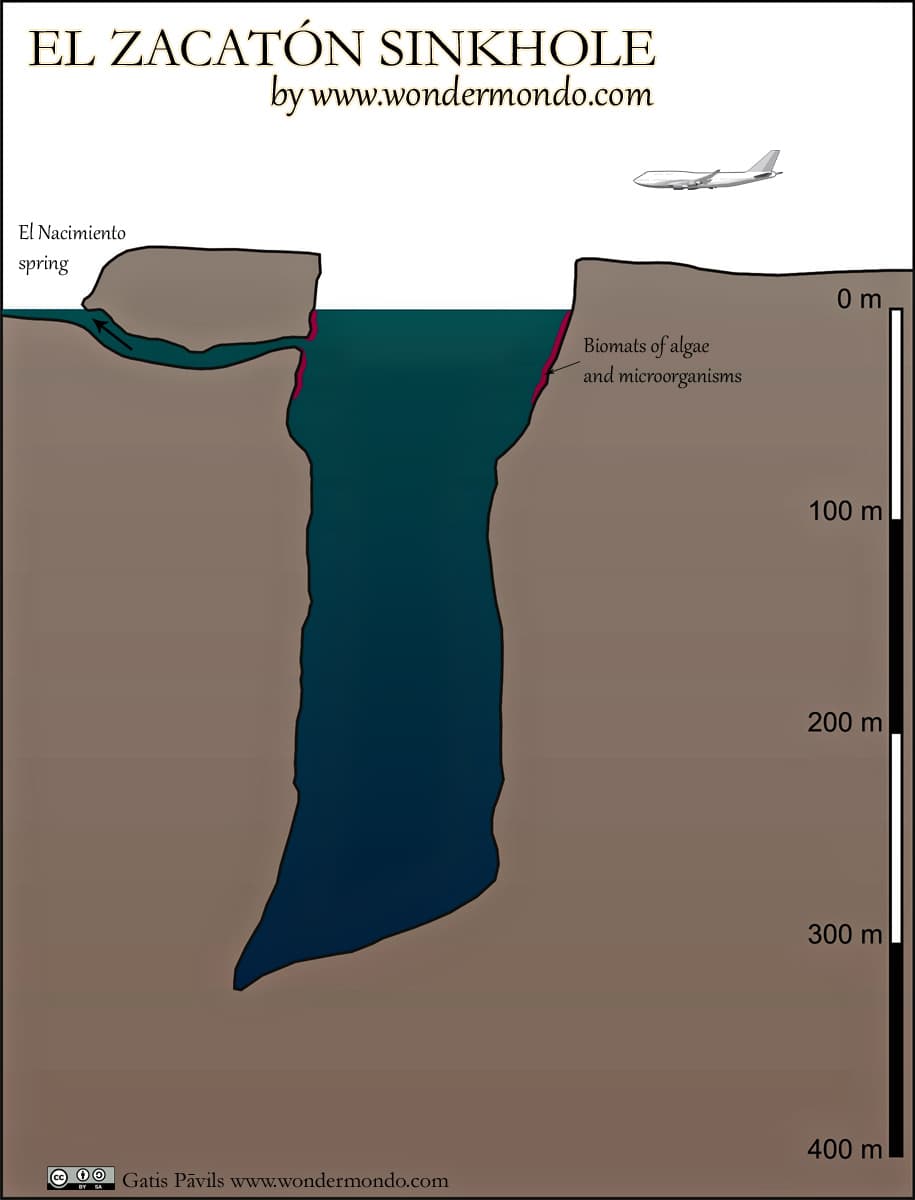
Attention of professional divers turned to this extremely deep sinkhole in the late 1980s and El Zacatón turned into a historically important dive site with several scuba diving world records set here.
One of the driving motives behind this interest was a wish to find the true depth of the sinkhole. As turned out later – the common measurement technique by using a measuring tape and weight is not applicable here – in 1990 such measurement gave a depth of 76 meters – weight stopped on a prominent ledge. In reality, though the sinkhole is several times deeper.
Descent into the lake along the vertical cliffs is very complicated. In 1990 there was discovered a more convenient way to enter El Zacatón: from the nearby El Nacimiento spring through a 230 m long and 17 m deep underwater cave passage called Passage de la Tortuga Muerta. Now this passage is the most often used passage to enter El Zacatón.
Women’s depth record in diving was reached here in 1993 by Dr. Ann Kristovich: she reached the depth of 169 m.
On April 6, 1994, there happened both a tragedy and an amazing achievement. Two very experienced cave divers – Sheck Exley and Jim Bowden simultaneously dived in the lake. Jim Bowden reached the world record – 282 m but Sheck Exley died due to unexplained reasons at the depth of 268 – 276 m. Both divers were not too far from each other but in the darkness could see only the lights of their partner and at such record depth, none of them was able to go and see how the other diver feels. The true depth of El Zacatón was not reached and still, there was no idea how deep it is.
Diving robots
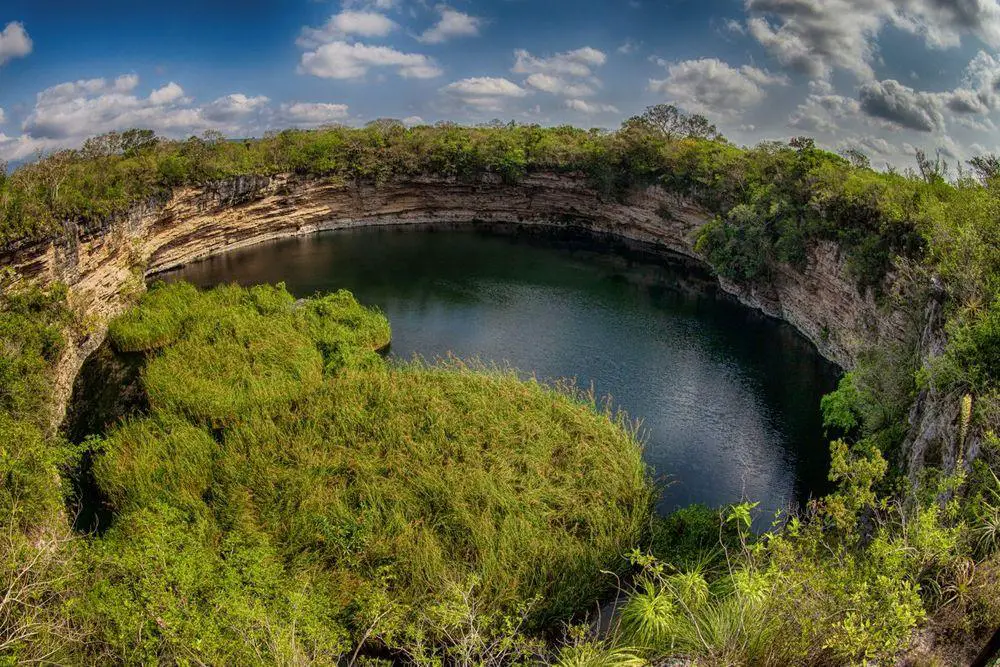
These tragic events changed the strategy of further research. Researchers decided to used robotic equipment.
El Zacatón was selected as a suitable place for scientific experiments by NASA and several other institutions. This unusual place served as a testbed for a semi-autonomous robot called Deep Phreatic Thermal Explorer (DEPTHX).
DEPTHX robot was successful and reached the bottom of the sinkhole in late May 2007. DEPTX also mapped the deepest part of El Zacatón which has been unavailable to people.
At large depth the robot collected samples which led to the discovery of new species of bacteria.
In the future the knowledge obtained in this experiment may help to develop technologies for the exploration of the Europa – moon of Jupiter, which has wast salt ocean – a potential source of indigenous life. Thus El Zacatón has played a role in the development of space technologies.
Lots of warm water
El Zacatón is the deepest water-filled sinkhole in the world. The total depth of the sinkhole is 339 m, the lake in it is 319 m deep.
In Italy has been found even deeper water-filled sinkhole – the 472 m deep Pozzo del Merro with 392 m deep lake. Even deeper is Hranice Abyss in Czechia with its 404 m deep lake. These though cannot be considered to be true sinkholes – both are caves.
At the water level the diameter of El Zacatón is approximately 116 m but the dimensions of the lake increase with the depth.
Bottom of El Zacatón is some 130 m below the sea level – such seep sinkholes are not created by normal groundwater action but rather by volcanic processes.
Volume of the water in the sinkhole is 9.5 million m³. The temperature and chemical content of the water is homogeneous except for a thin level of rainwater on the surface.
Water of El Zacatón is 29 – 30° C warm. It is highly mineralized, with a sulfurous odor, slightly acidic with pH 6.9.
Color of water is not homogenous – at some locations, there are light clouds formed by the particles of precipitated sulfur.
Unique microorganisms
Like in several other sinkholes of Sistema Zacatón the travertine walls of the upper part of the sinkhole are entirely covered with purple, red, and green biomats extending from the surface to 35 – 40 m depth. Closer to the surface these mats are green colored but at some 3 m appear purple biomats. These microbial communities disappear totally below 100 m depth – it means that these microorganisms are dependant on the light.
But in greater depths, there live other microorganisms. There have been found at least 9 new classes of microbes on the rock walls at 115 – 270 m depth.
Floating islands
El Zacatón is one of the very few places in the world with floating islands formed from precipitated calcium carbonate. According to written sources, such islands were floating also in Italy near Tivoli, in sulfurous waters of Lago della Regina – nowadays they don’t exist.
These islands have given a name to the sinkhole – they are covered with tall grass called "zacate" in Mexican Spanish.
Islands are free-floating and are moved around the surface of the lake with the wind. They are roughly circular and with steep sides from regularly bouncing off the walls and each other. Diameter of islands is 3 – 10 m.
It is possible that these unique islands eventually will grow bigger and at some moment may cover the whole sinkhole – creating a travertine lid like in Poza Seca and several more sinkholes in Sistema Zacatón.
Such process of naturally created floating travertine islands is very rare in nature. It may be formed by the chemical processes in volcanic heated, slightly acidic water – as the water meets air, dissolved carbon dioxide outgasses, leaving particles of lime at the surface.
Created by volcanic heat?
Long-term researcher of El Zacatón – Marcus Gary – considers that the unusual karst landscape of Sistema Zacatón has been formed by deep volcanic activity. Volcanism heats the deep groundwater and turns it slightly acidic by adding dissolved carbon dioxide and hydrogen sulfide.
As this water reaches limestone layers, it gradually dissolves it, forming voids. Such a process is called "hypogenic karstification". As the void becomes larger, the limestone layers in the ceiling collapse one after another finally reaching the surface. If this theory is true, the formation of these sinkholes differs very much from the mechanism of formation of most other sinkholes.
References
- Marcus Gary, Sistema Zacatón, research homepage. Accessed in the 23rd June 2010
- Marcus Gary, El Zacatón, image. Accessed on June 27, 2010
- Marcus O. Gary, John M. Sharp Jr.Volcanogenic karstification of Sistema Zacatón, Mexico. Accessed on July 2, 2010
El Zacatón sinkhole is included in the following lists and articles:
 Linked articles
Linked articles
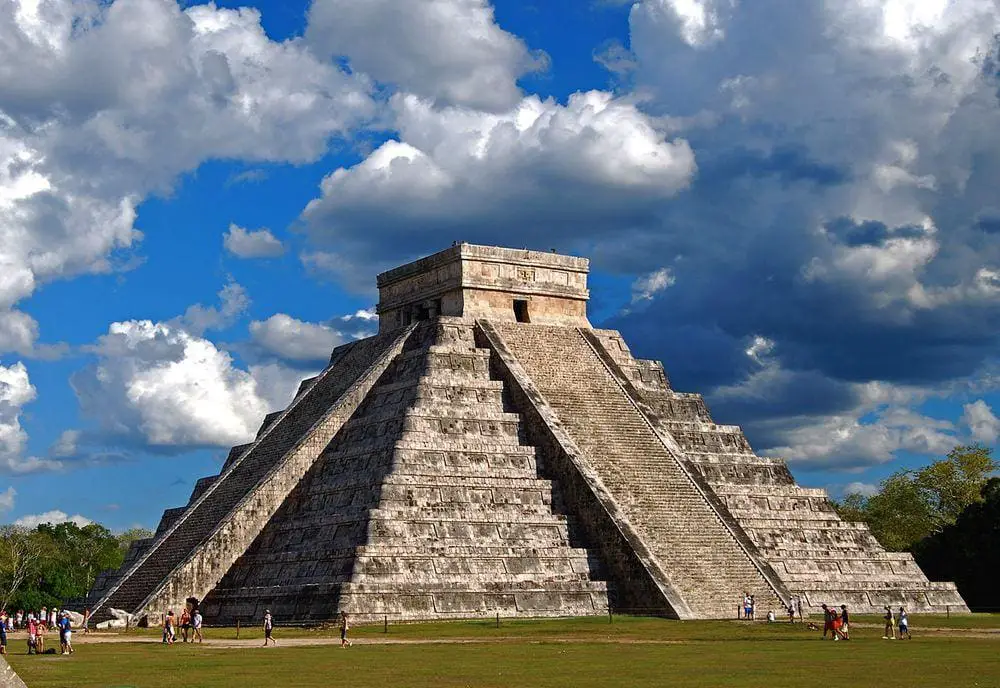
Wonders of Mexico
Few countries in the world can offer such an array of unique and astounding attractions as Mexico.
The area of this country was the cradle of several highly developed indigenous civilizations and some regions in the country are dotted with remnants of ancient cities with temples, palaces, and pyramids.
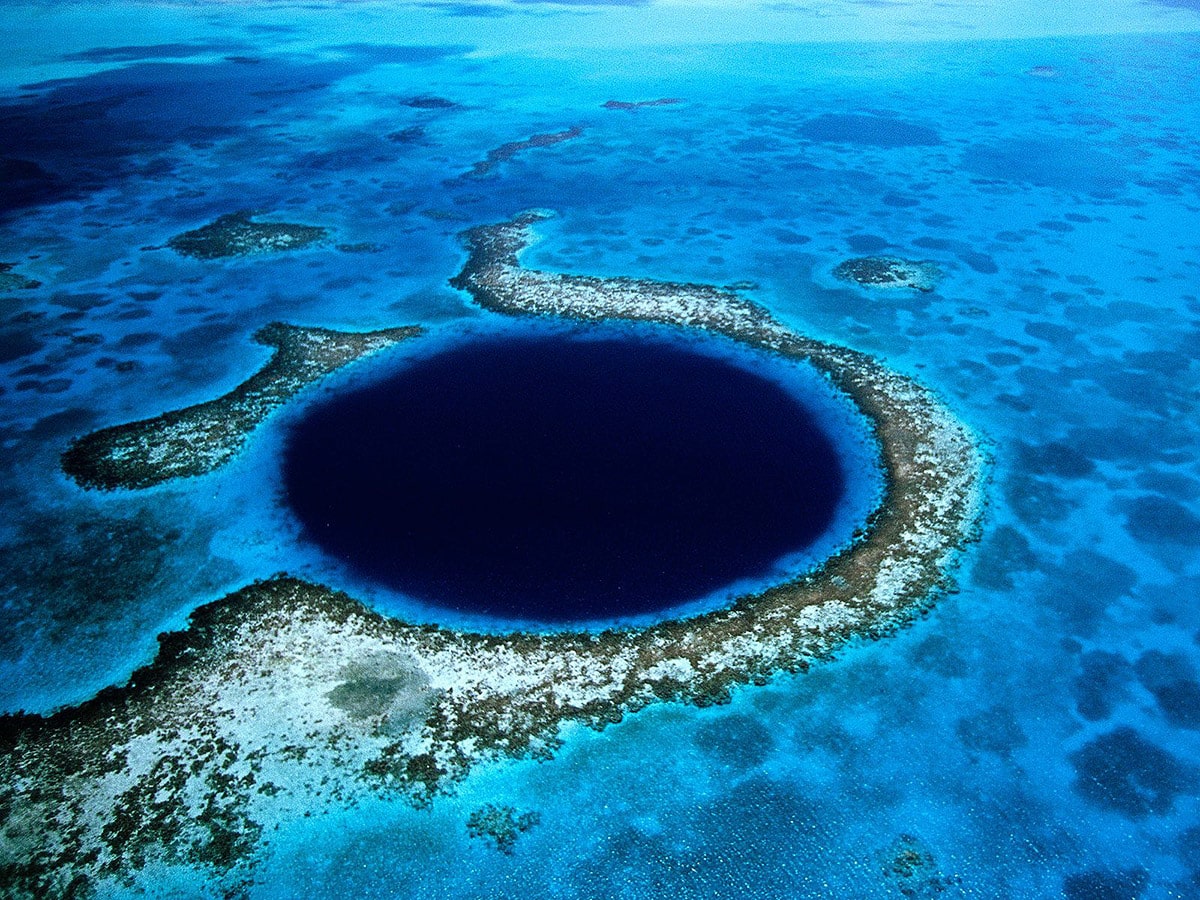
Sinkholes
This category includes outstanding sinkholes – large natural depressions or holes, which for most the part represent collapsed caves.
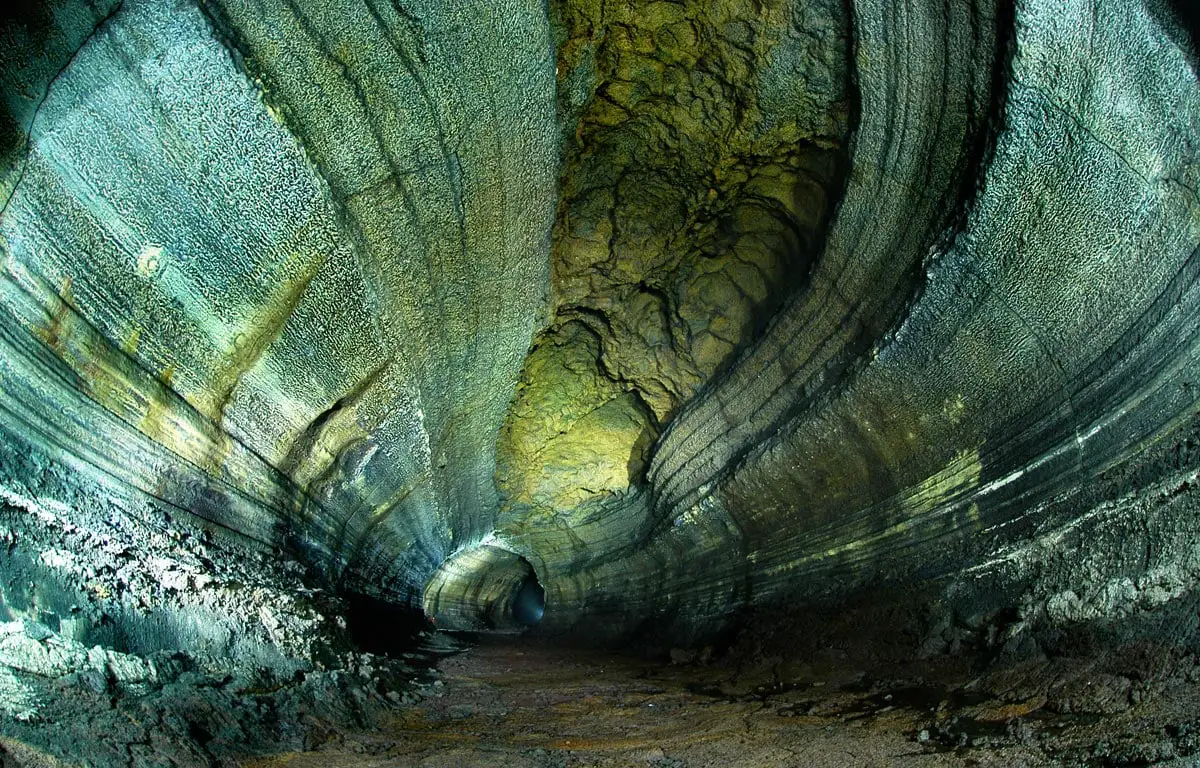
Caves
Every year there are reported exciting discoveries of new caves and discoveries of new qualities such as cave paintings in the ones known before. But there still is a feeling that our knowledge covers just a small part of all these monuments of nature.
Though, those which are known to us, offer a surprising diversity of unusual features and impressive sights.
 Recommended books
Recommended books
Hypogene Karst Regions and Caves of the World
This book illustrates the diversity of hypogene speleogenetic processes and void-conduit patterns depending on variations of the geological environments by presenting regional and cave-specific case studies. The cases include both well-known and newly recognized hypogene karst regions and caves of the world. They all focus on geological, hydrogeological, geodynamical, and evolutionary contexts of hypogene speleogenesis.
Encyclopedia of Caves and Karst Science
The Encyclopedia of Caves and Karst Science contains 350 alphabetically arranged entries. The topics include cave and karst geoscience, cave archaeology and human use of caves, art in caves, hydrology and groundwater, cave and karst history, and conservation and management. The Encyclopedia is extensively illustrated with photographs, maps, diagrams, and tables, and has thematic content lists and a comprehensive index to facilitate searching and browsing.

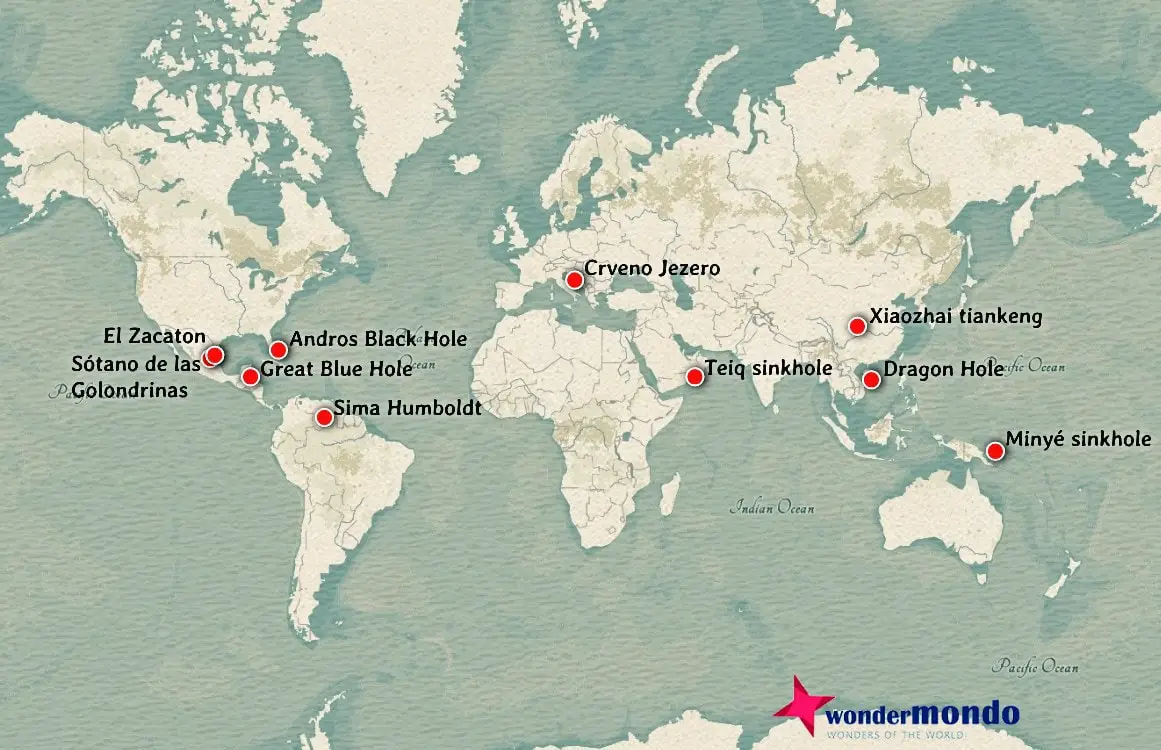
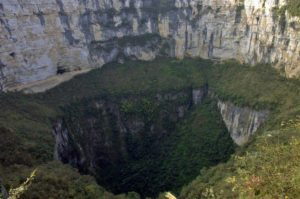


[…] Zdroje: astrobiology.nasa.gov, http://www.wondermondo.com […]